Überblick über Hochreines Pulver
In der Welt der Materialwissenschaft sind hochreine Pulver die Bausteine für fortschrittliche Fertigung und Technologie. Diese fein gemahlenen Partikel - oft Metalle oder Metalllegierungen - werden wegen ihrer außergewöhnlichen Reinheit, gleichmäßigen Partikelgröße und präzisen chemischen Zusammensetzung geschätzt. Aber was genau ist hochreines Pulver? Warum ist es so wichtig? Und welche verschiedenen Arten gibt es?
Wenn Sie in die Welt der hochreinen Pulver eintauchen wollen, ist es wichtig, die Besonderheiten dieses speziellen Materials zu kennen. In diesem Leitfaden gehen wir auf alles ein, von der Zusammensetzung und den Eigenschaften dieser Pulver bis hin zu ihren Anwendungen, Anbietern und der Auswahl des für Ihre Bedürfnisse am besten geeigneten Pulvers.
Was ist hochreines Pulver?
Hochreine Pulver sind fein verteilte Substanzen, in der Regel Metalle oder Legierungen, die einen Reinheitsgrad von 99,9% oder höher aufweisen. Diese Pulver sind in Branchen von entscheidender Bedeutung, in denen selbst geringste Verunreinigungen zu erheblichen Leistungsproblemen oder Ausfällen führen können, z. B. in der Elektronik, der Luft- und Raumfahrt und der Pharmazie.
Stellen Sie sich vor, Sie versuchen, einen Kuchen mit Mehl zu backen, in dem winzige Sandkörner stecken. Das Ergebnis wäre nicht das, was Sie erwarten, oder? Die gleiche Logik gilt für Herstellungsverfahren, bei denen Metallpulver verwendet werden - Reinheit ist das A und O.
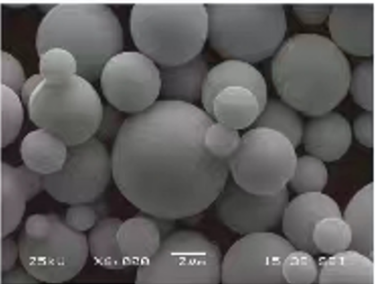
Die Zusammensetzung des hochreinen Pulvers
Hochreine Pulver gibt es in verschiedenen Zusammensetzungen, je nach Metall oder Legierung, um die es geht. Jeder Typ hat seine eigenen Merkmale, die ihn für bestimmte Anwendungen geeignet machen. Nachstehend finden Sie eine Tabelle mit einigen der gebräuchlichsten hochreinen Metallpulver, ihrer Zusammensetzung und ihren wichtigsten Eigenschaften.
| Metall-Pulver | Zusammensetzung | Reinheitsgrad | Wesentliche Merkmale |
|---|---|---|---|
| Aluminium-Pulver | Al (99,9% oder höher) | 99.9% | Leichtes Gewicht, hohe Leitfähigkeit, korrosionsbeständig |
| Kupfer-Pulver | Cu (99,99% oder höher) | 99.99% | Ausgezeichnete elektrische Leitfähigkeit, dehnbar |
| Titan-Pulver | Ti (99,5% oder höher) | 99.5% | Hohe Festigkeit im Verhältnis zum Gewicht, korrosionsbeständig |
| Silbernes Pulver | Ag (99,99% oder höher) | 99.99% | Hohe thermische und elektrische Leitfähigkeit |
| Gold-Pulver | Au (99,99% oder höher) | 99.99% | Hohe Korrosionsbeständigkeit, ausgezeichnete Leitfähigkeit |
| Eisenpulver | Fe (99,9% oder höher) | 99.9% | Magnetisch, leicht legierbar mit anderen Metallen |
| Nickel-Pulver | Ni (99,8% oder höher) | 99.8% | Hohe Oxidations- und Korrosionsbeständigkeit |
| Zink-Pulver | Zn (99,9% oder höher) | 99.9% | Korrosionsbeständig, Verwendung in der Galvanik |
| Platin-Pulver | Pt (99,95% oder höher) | 99.95% | Äußerst korrosionsbeständig, katalytische Eigenschaften |
| Palladium-Pulver | Pd (99,95% oder höher) | 99.95% | Ausgezeichnete katalytische Eigenschaften, korrosionsbeständig |
Merkmale von Hochreines Pulver
Die Eigenschaften von hochreinen Pulvern sind es, die sie in verschiedenen Branchen so wertvoll machen. Hier sind einige der wichtigsten Eigenschaften:
- Reinheit: Der hohe Reinheitsgrad (99,9% und höher) gewährleistet, dass es nur minimale Verunreinigungen gibt, die die Leistung des Materials beeinträchtigen könnten.
- Partikelgröße und -verteilung: Eine gleichmäßige Partikelgröße und -verteilung ist entscheidend für die Einheitlichkeit des Endprodukts.
- Chemische Beständigkeit: Diese Pulver sind chemisch stabil, d. h. sie reagieren nicht leicht mit anderen Stoffen, was in Umgebungen, in denen Reaktivität zu Sicherheitsbedenken oder Produktausfällen führen könnte, von entscheidender Bedeutung ist.
- Fließfähigkeit: Die Fähigkeit des Pulvers, reibungslos zu fließen, ist bei Herstellungsverfahren wie 3D-Druck oder Pulvermetallurgie von entscheidender Bedeutung.
- Dichte: Die Dichte des Pulvers kann sich auf die Eigenschaften des Endprodukts auswirken, z. B. auf die Festigkeit und Haltbarkeit.
Arten von hochreinen Metallpulvern
Wir wollen uns nun näher mit bestimmten hochreinen Metallpulvern befassen und ihre einzigartigen Eigenschaften, Anwendungen und die Gründe für ihre Besonderheit untersuchen.
1. Aluminium-Pulver
- Eigenschaften: Aluminiumpulver ist bekannt für sein geringes Gewicht und seine hohe elektrische Leitfähigkeit. Außerdem ist es korrosionsbeständig, was es ideal für Anwendungen in der Luft- und Raumfahrt und der Automobilindustrie macht.
- Anwendungen: Weit verbreitet bei der Herstellung von Farben, Sprengstoffen und als Bestandteil von Metallbeschichtungen.
2. Kupferpulver
- Eigenschaften: Mit seiner ausgezeichneten elektrischen Leitfähigkeit und Duktilität ist Kupferpulver ein wichtiger Werkstoff in der Elektronik.
- Anwendungen: Wird bei der Herstellung von elektrischen Bauteilen, leitfähigen Druckfarben und Beschichtungen verwendet.
3. Titan-Pulver
- Eigenschaften: Titanpulver bietet ein hohes Verhältnis von Festigkeit zu Gewicht und ist korrosionsbeständig, was es zu einem idealen Material für medizinische Implantate und Bauteile in der Luft- und Raumfahrt macht.
- Anwendungen: Wird häufig im 3D-Druck, in der Luft- und Raumfahrt und in der Biomedizin verwendet.
4. Silber-Pulver
- Eigenschaften: Silberpulver ist hoch leitfähig und hat antimikrobielle Eigenschaften, was es für elektronische und medizinische Anwendungen wertvoll macht.
- Anwendungen: Wird in leitfähigen Pasten, Solarzellen und antimikrobiellen Beschichtungen verwendet.
5. Gold-Pulver
- Eigenschaften: Goldpulver ist extrem korrosionsbeständig und hat eine ausgezeichnete elektrische Leitfähigkeit, was es ideal für hochwertige elektronische und medizinische Geräte macht.
- Anwendungen: Wird in der Elektronik, im Schmuckbereich und als Katalysator bei chemischen Reaktionen verwendet.
6. Eisenpulver
- Eigenschaften: Eisenpulver ist magnetisch und lässt sich leicht legieren, was eine breite Palette von Anwendungen in der Fertigung und Metallurgie ermöglicht.
- Anwendungen: Wird in Automobilteilen, magnetischen Materialien und als Katalysator in chemischen Reaktionen verwendet.
7. Nickel-Pulver
- Eigenschaften: Nickelpulver ist sehr oxidations- und korrosionsbeständig und eignet sich daher für raue Umgebungen.
- Anwendungen: Wird in Batterien, Superlegierungen und als Katalysator in Hydrierungsprozessen verwendet.
8. Zink-Pulver
- Eigenschaften: Zinkpulver ist vor allem für seine Korrosionsbeständigkeit bekannt und wird häufig für Schutzbeschichtungen verwendet.
- Anwendungen: Weit verbreitet in der Galvanik, als Korrosionsschutzmittel und bei der Herstellung von Batterien.
9. Platin-Pulver
- Eigenschaften: Platinpulver ist äußerst korrosionsbeständig und verfügt über hervorragende katalytische Eigenschaften, die es sowohl in der Industrie als auch in der Medizin wertvoll machen.
- Anwendungen: Wird in Katalysatoren, Brennstoffzellen und als Katalysator bei verschiedenen chemischen Reaktionen verwendet.
10. Palladium-Pulver
- Eigenschaften: Palladiumpulver ist bekannt für seine katalytischen Eigenschaften und seine Anlaufbeständigkeit, wodurch es sich für eine Vielzahl von chemischen Prozessen eignet.
- Anwendungen: Wird häufig in der Elektronik, in Katalysatoren und bei der Wasserstoffaufbereitung verwendet.
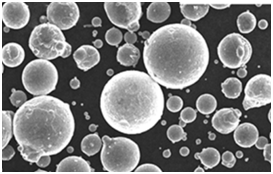


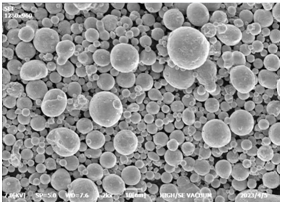
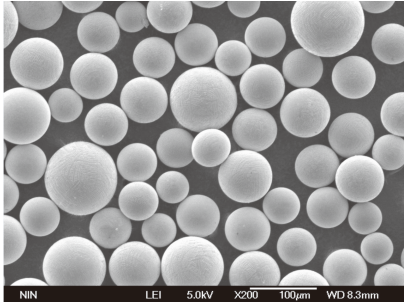
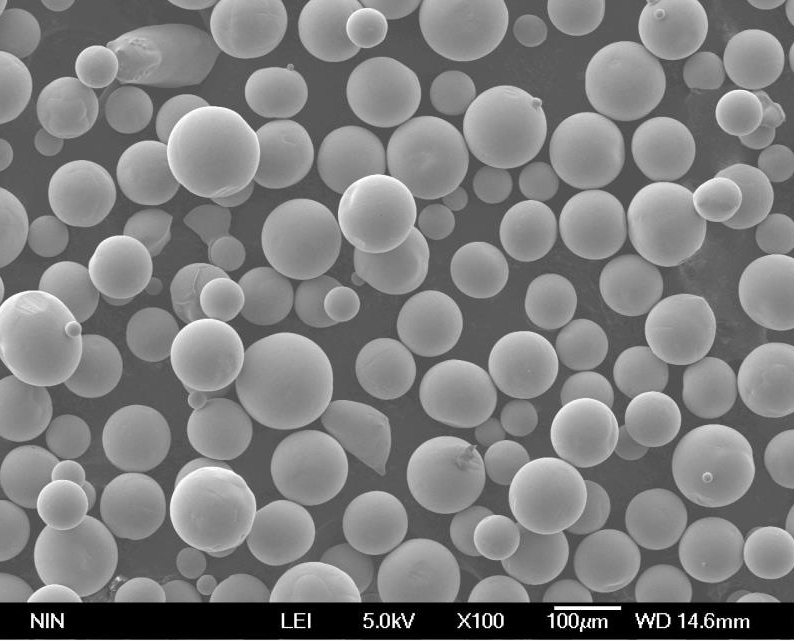
Anwendungen des hochreinen Pulvers
Hochreine Pulver werden in einer Vielzahl von Branchen eingesetzt, die je nach Anwendung unterschiedliche Eigenschaften erfordern. Im Folgenden finden Sie eine Aufschlüsselung, wie diese Pulver in verschiedenen Bereichen eingesetzt werden:
| Industrie | Gemeinsame Anwendungen | Beispiele für verwendete Pulver |
|---|---|---|
| Elektronik | Leitfähige Tinten, Leiterplatten (PCBs), Halbleiter | Kupfer, Silber, Gold, Palladium |
| Luft- und Raumfahrt | Leichte Komponenten, Beschichtungen, 3D-gedruckte Teile | Aluminium, Titan, Nickel |
| Automobilindustrie | Motorkomponenten, Katalysatoren, Batterieelektroden | Platin, Palladium, Zink, Eisen |
| Medizinische | Implantate, Prothesen, antimikrobielle Beschichtungen | Titan, Silber, Gold, Platin |
| Energie | Brennstoffzellen, Solarzellen, Batterien | Platin, Nickel, Kupfer, Silber |
| Chemisch | Katalysatoren, Hydrierungsprozesse | Palladium, Platin, Nickel |
| Schmuck | Hochwertige Schmuckstücke, korrosionsbeständige Beschichtungen | Gold, Silber, Platin |
Spezifikationen, Größen, Güteklassen und Normen
Verstehen der Spezifikationen, Größen und Qualitäten von hochreine Pulver ist entscheidend für die Auswahl des richtigen Materials für Ihre Bedürfnisse. Nachstehend finden Sie eine Tabelle mit den wichtigsten Spezifikationen für jedes Metallpulver.
| Metall-Pulver | Partikelgrößenbereich (µm) | Reinheitsgrad | Normen |
|---|---|---|---|
| Aluminium-Pulver | 1 – 100 | 99.9% (Hohe Reinheit) | ASTM B928/B928M-15 |
| Kupfer-Pulver | 0.5 – 75 | 99.99% (Ultrahochreine) | ASTM B170 |
| Titan-Pulver | 5 – 45 | 99.5% (Hohe Reinheit) | ASTM F67, ASTM F136 |
| Silbernes Pulver | 1 – 50 | 99.99% (Ultrahochreine) | ASTM B832 |
| Gold-Pulver | 1 – 10 | 99.99% (Ultrahochreine) | ASTM B488 |
| Eisenpulver | 10 – 150 | 99.9% (Hohe Reinheit) | ASTM A575, ASTM A876 |
| Nickel-Pulver | 5 – 20 | 99.8% (Hohe Reinheit) | ASTM B330 |
| Zink-Pulver | 1 – 50 | 99.9% (Hohe Reinheit) | ASTM B822 |
| Platin-Pulver | 1 – 25 | 99.95% (Ultrahochreine) | ASTM B562 |
| Palladium-Pulver | 0.5 – 5 | 99.95% (Ultrahochreine) | ASTM B563 |
Lieferanten und Preisangaben für hochreine Pulver
Wenn es um die Beschaffung hochreiner Pulver geht, bieten mehrere seriöse Anbieter eine Reihe von Produkten an. Die Preise können je nach Reinheit, Partikelgröße und Abnahmemenge erheblich variieren.
| Anbieter | Verfügbare Pulver | Preisspanne (pro kg) | Standort |
|---|---|---|---|
| Amerikanische Elemente | Aluminium, Kupfer, Titan, Nickel | $150 – $800 | USA |
| Fortgeschrittene Materialien Inc. | Silber, Gold, Platin, Palladium | $500 – $2,000 | USA |
| Goodfellow | Zink, Eisen, Kupfer, Nickel | $100 – $600 | UK |
| Alfa Aesar | Titan, Aluminium, Gold, Silber | $200 – $1,500 | USA |
| Metallpulver USA | Kupfer, Zink, Nickel, Palladium | $250 – $1,200 | USA |
Vergleich von hochreinen Pulvern: Vorteile und Beschränkungen
Bei der Wahl des richtigen hochreinen Pulvers müssen oft die Vorteile und Einschränkungen der einzelnen Optionen verglichen werden. Die folgende Tabelle schlüsselt diese Faktoren für jedes besprochene Metallpulver auf.
| Metall-Pulver | Vorteile | Beschränkungen |
|---|---|---|
| Aluminium-Pulver | Leicht, korrosionsbeständig, leitfähig | Oxidiert leicht, niedriger Schmelzpunkt |
| Kupfer-Pulver | Ausgezeichnete Leitfähigkeit, dehnbar | Anfällig für Oxidation, relativ teuer |
| Titan-Pulver | Hohes Festigkeits-Gewichts-Verhältnis, biokompatibel | Teuer, schwierig zu verarbeiten |
| Silbernes Pulver | Hervorragende Leitfähigkeit, antimikrobielle Eigenschaften | Teuer, beschlägt mit der Zeit |
| Gold-Pulver | Ausgezeichnete Leitfähigkeit, korrosionsbeständig | Sehr teuer, schwer |
| Eisenpulver | Magnetisch, leicht legierbar | Anfällig für Rost, schwer |
| Nickel-Pulver | Korrosionsbeständig, hoher Schmelzpunkt | Allergische Reaktionen bei einigen Anwendungen |
| Zink-Pulver | Korrosionsbeständig, kostengünstig | Niedriger Schmelzpunkt, nicht sehr stark |
| Platin-Pulver | Äußerst korrosionsbeständig, hervorragende katalytische Eigenschaften | Extrem teuer, schwer |
| Palladium-Pulver | Hohe katalytische Effizienz, anlaufgeschützt | Sehr teuer, begrenzte Verfügbarkeit |

FAQs
Hier finden Sie einige häufig gestellte Fragen zu hochreinen Pulvern sowie ausführliche Antworten.
| Frage | Antwort |
|---|---|
| Was macht ein hochreines Pulver aus? | Hochreine Pulver haben einen Reinheitsgrad von 99,9% oder höher und gewährleisten minimale Verunreinigungen. |
| Warum ist der Reinheitsgrad bei Metallpulvern wichtig? | Die Reinheit ist entscheidend, da Verunreinigungen die Leistung, Leitfähigkeit und Sicherheit des Endprodukts beeinträchtigen können. |
| Welche Branchen verwenden hochreine Pulver? | Hochreine Pulver werden in der Elektronik-, Luft- und Raumfahrt-, Automobil-, Medizin-, Energie- und Chemieindustrie verwendet. |
| Wie wähle ich das richtige hochreine Pulver aus? | Berücksichtigen Sie die spezifische Anwendung, die erforderlichen Eigenschaften und das Budget, um das geeignete Pulver auszuwählen. |
| Was sind die Herausforderungen beim Umgang mit hochreinen Pulvern? | Die Handhabung kann aufgrund der feinen Partikelgröße und der möglichen Reaktivität schwierig sein. Eine ordnungsgemäße Lagerung und Handhabung ist unerlässlich. |
| Sind hochreine Pulver teuer? | Ja, hochreine Pulver sind in der Regel teurer, da der Herstellungsprozess komplex ist und hochwertige Materialien benötigt werden. |
| Wie werden hochreine Pulver hergestellt? | Sie werden in der Regel durch Verfahren wie Zerstäubung, chemische Reduktion und Elektrolyse hergestellt, um eine hohe Reinheit und Konsistenz zu gewährleisten. |
| Können hochreine Pulver individuell angepasst werden? | Ja, viele Anbieter bieten individuelle Anpassungsmöglichkeiten in Bezug auf Partikelgröße, Verteilung und Reinheitsgrad. |
| Was sind die Umweltprobleme bei hochreinen Pulvern? | Die Herstellung und Entsorgung von hochreinen Pulvern muss sorgfältig gehandhabt werden, um eine Verunreinigung der Umwelt zu vermeiden. Recycling und verantwortungsbewusste Beschaffung können diese Bedenken ausräumen. |
| Gibt es Alternativen zu hochreinen Pulvern? | Je nach Anwendung können auch Pulver mit geringerem Reinheitsgrad oder andere Materialien verwendet werden, die jedoch möglicherweise nicht das gleiche Leistungsniveau bieten. |
Schlussfolgerung
Hochreine Pulver sind die unbesungenen Helden der modernen Fertigung und Technologie. Mit ihrer außergewöhnlichen Reinheit und ihren einzigartigen Eigenschaften spielen diese Pulver eine entscheidende Rolle in Branchen, die von der Luft- und Raumfahrt bis zur Elektronik reichen. Ganz gleich, ob Sie die Leistung eines Produkts verbessern oder Spitzentechnologien entwickeln wollen, es ist wichtig, die Feinheiten hochreiner Pulver zu verstehen. Durch die Wahl des richtigen Pulvers für Ihre Anwendung können Sie bei Ihren Projekten optimale Leistung, Zuverlässigkeit und Effizienz gewährleisten.

